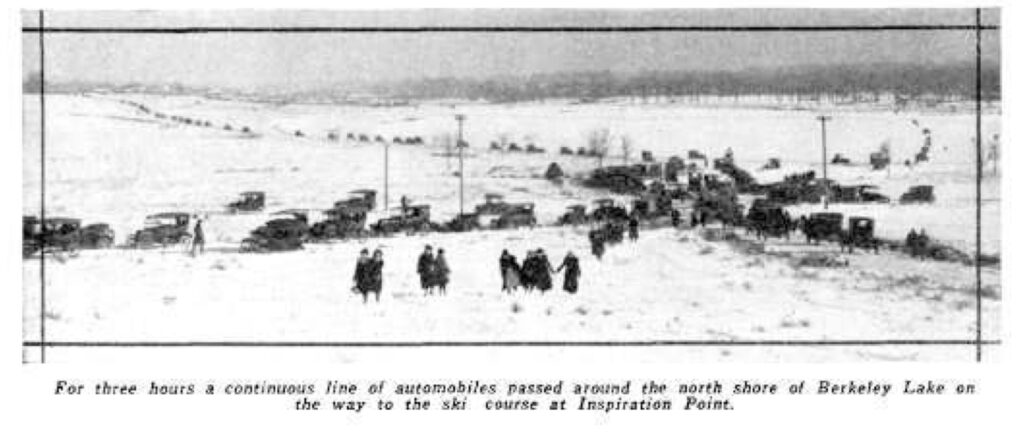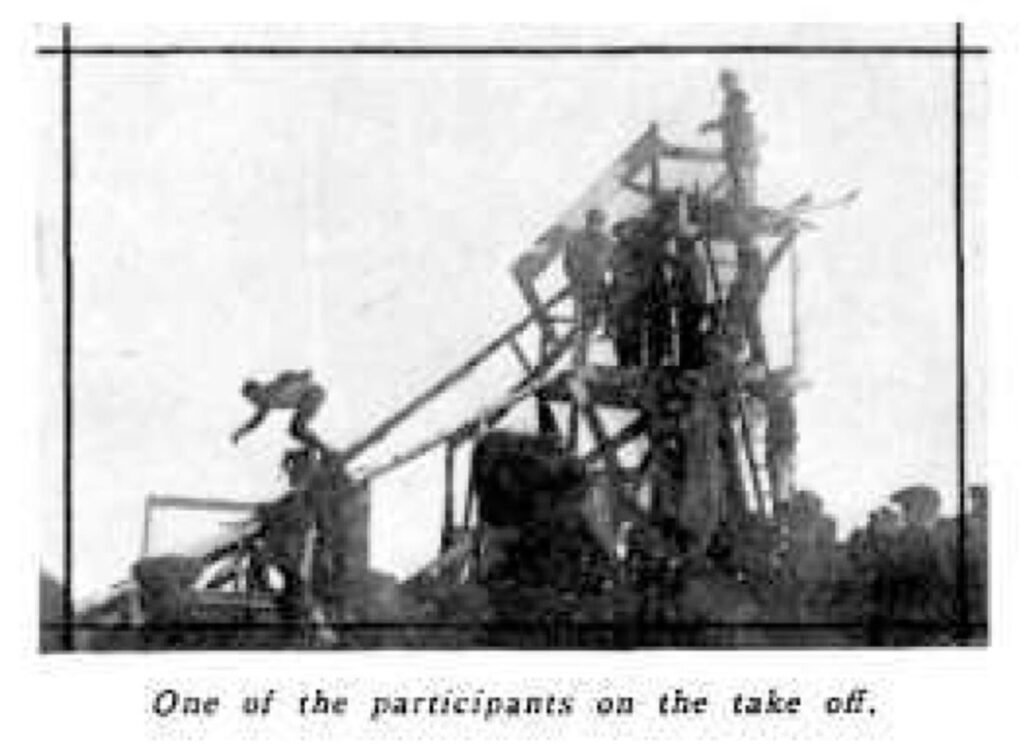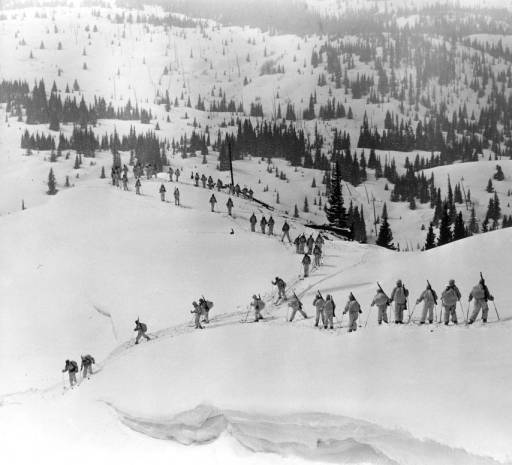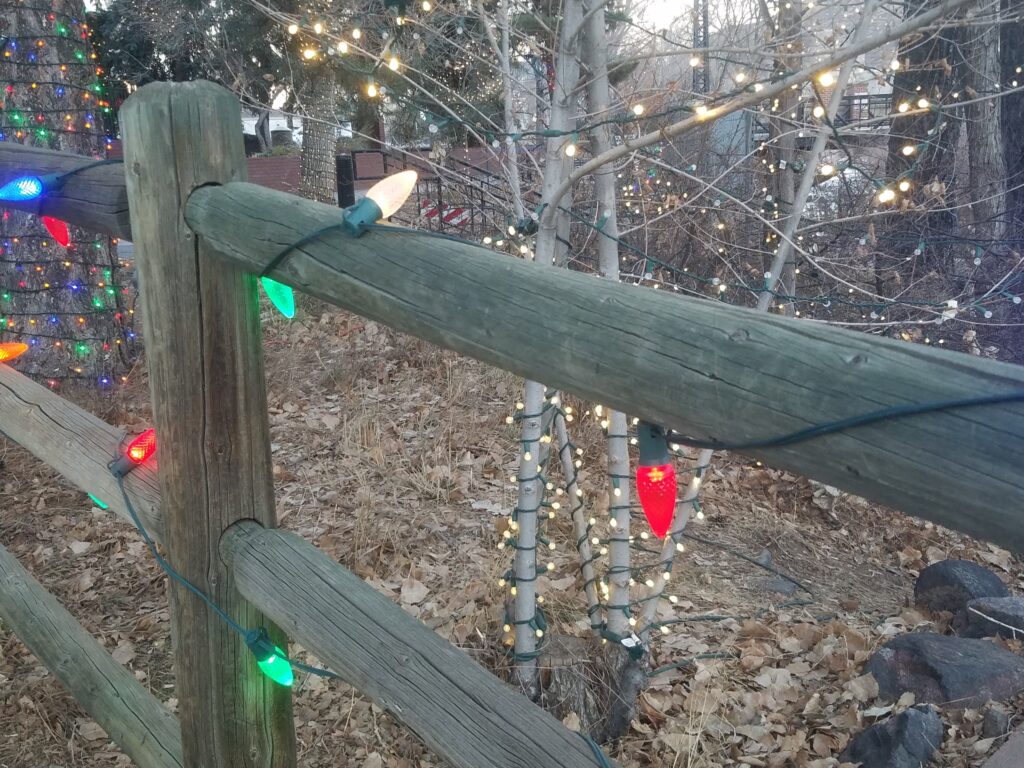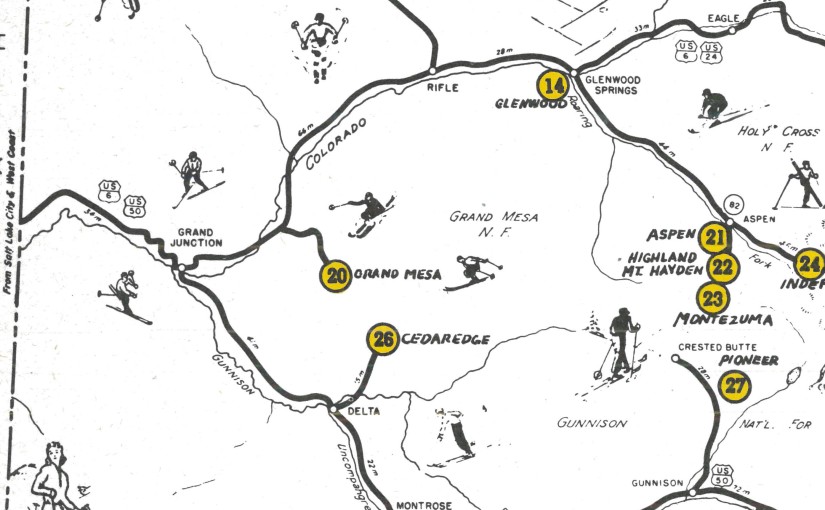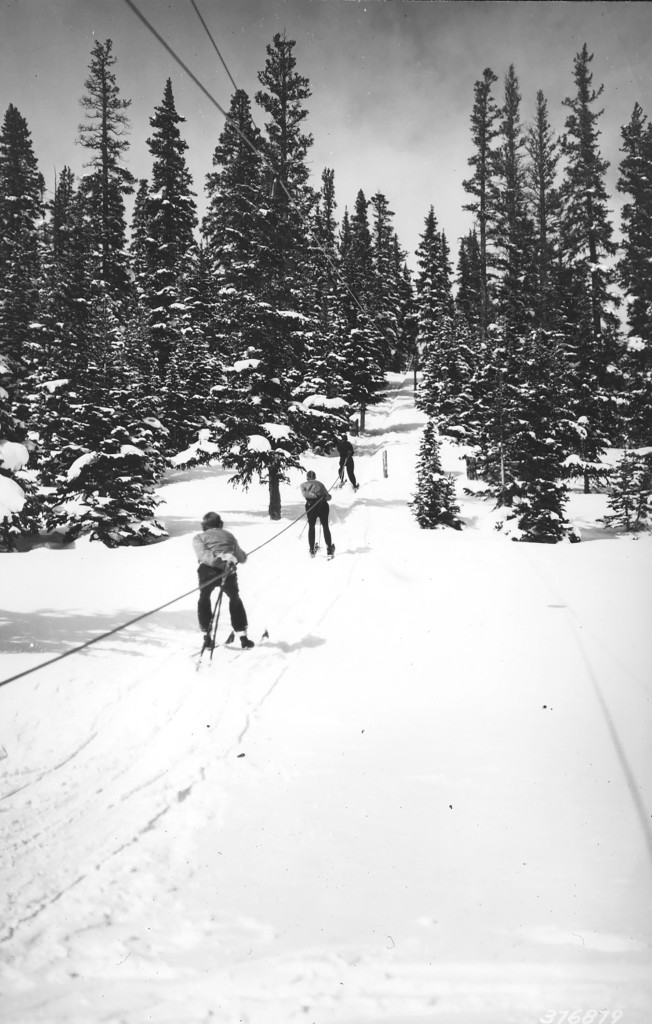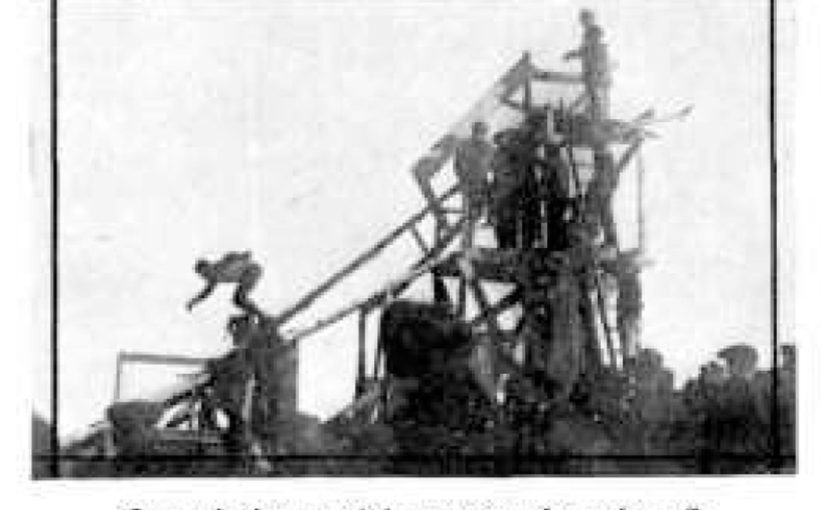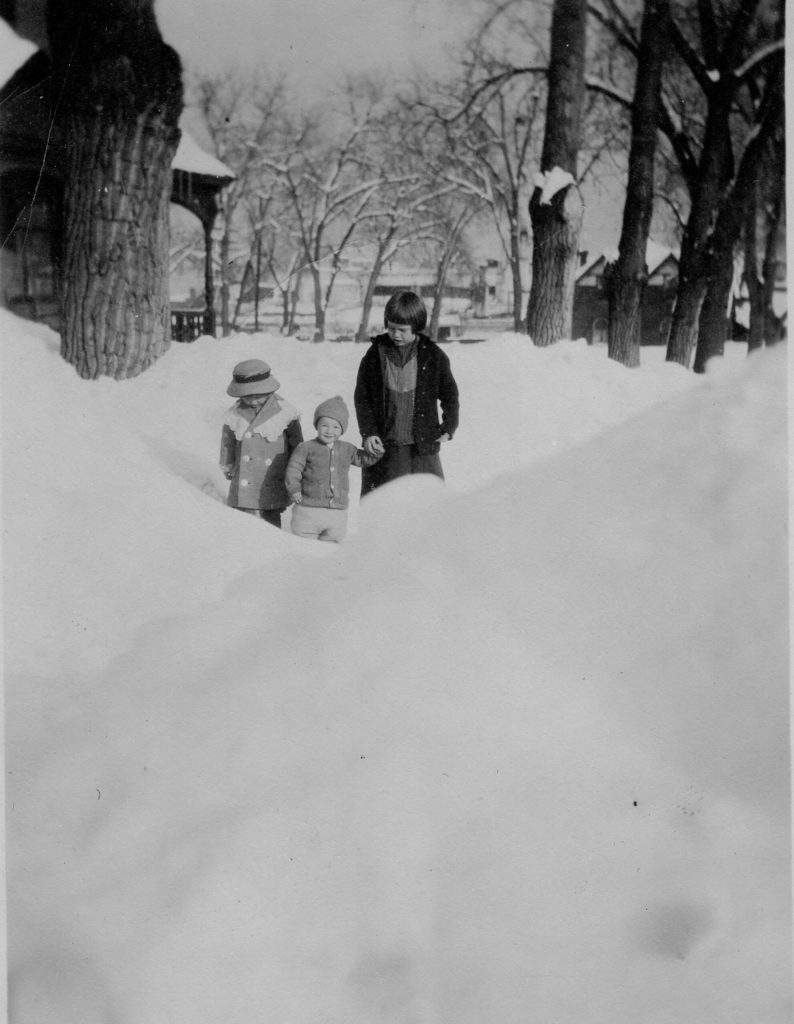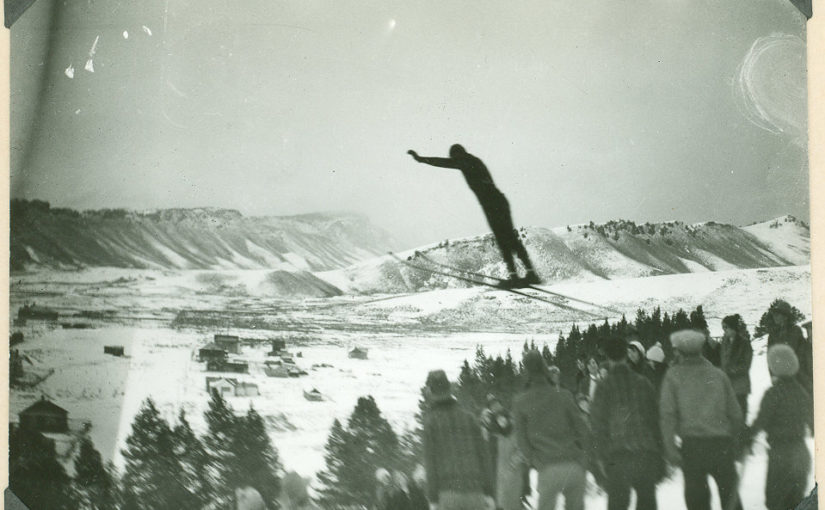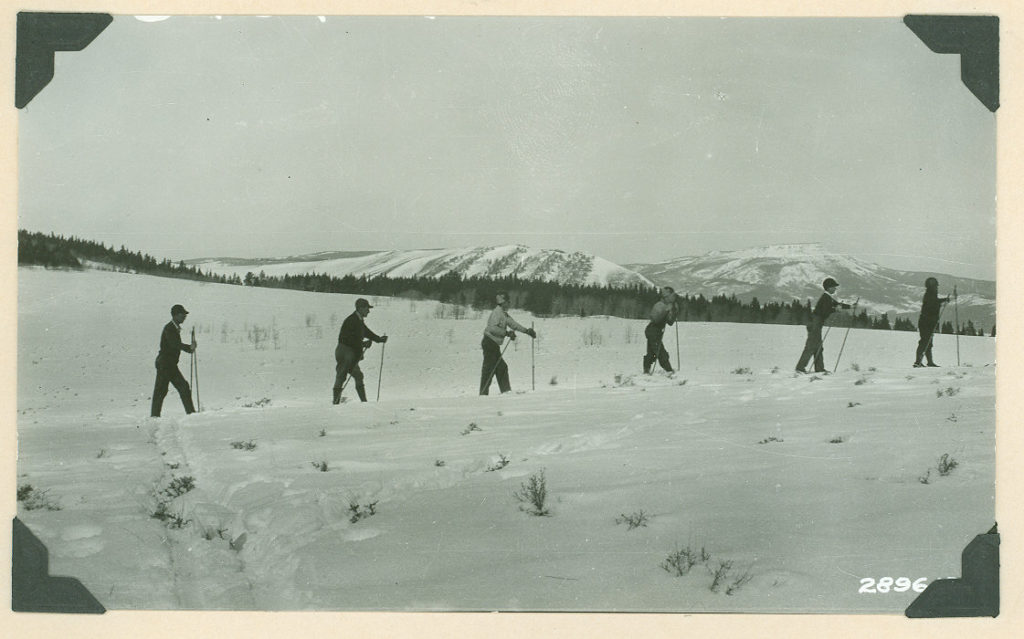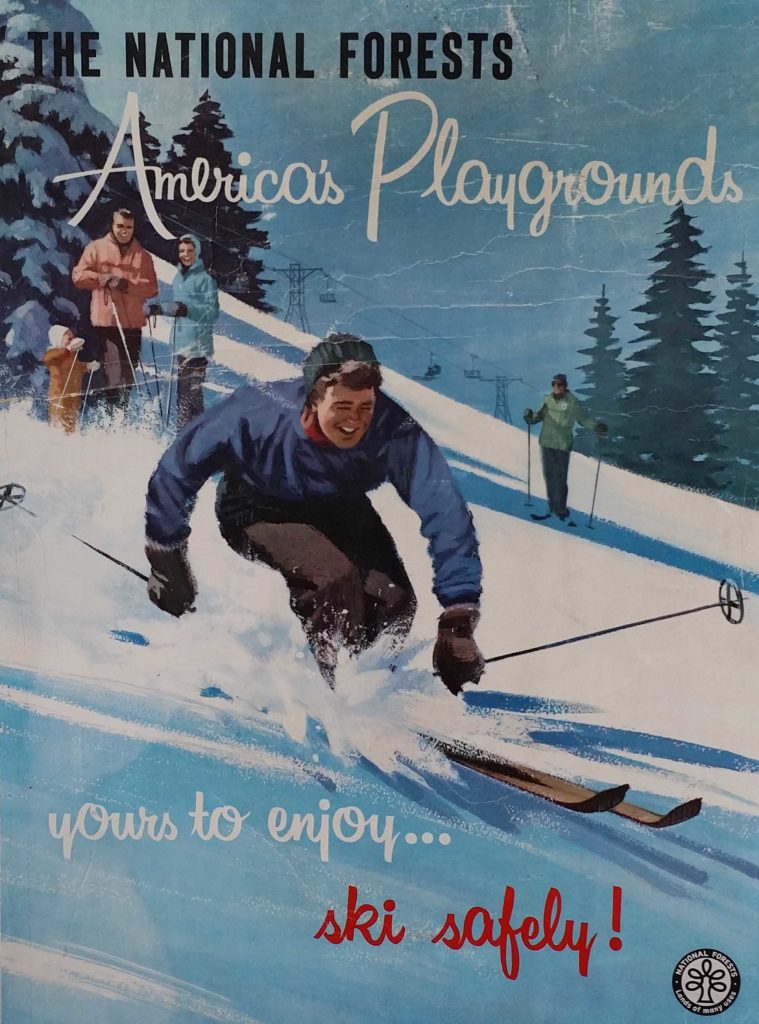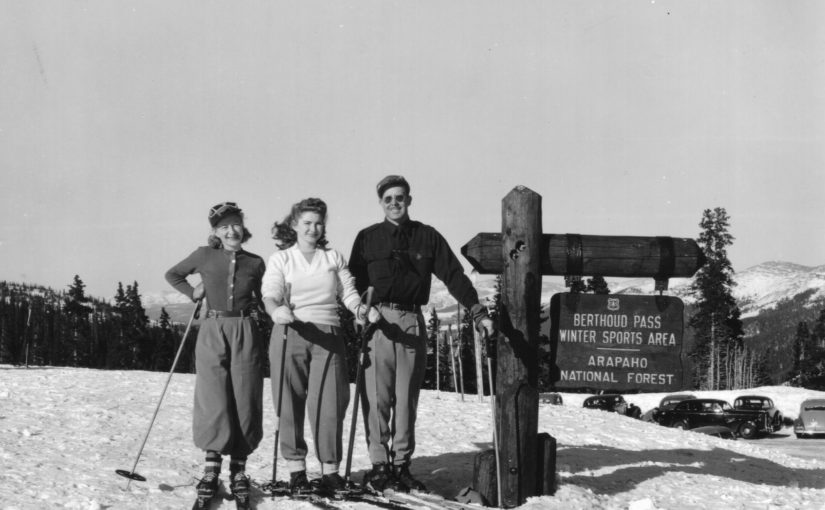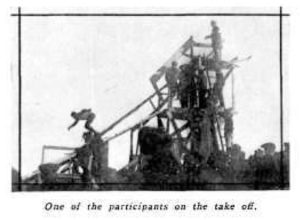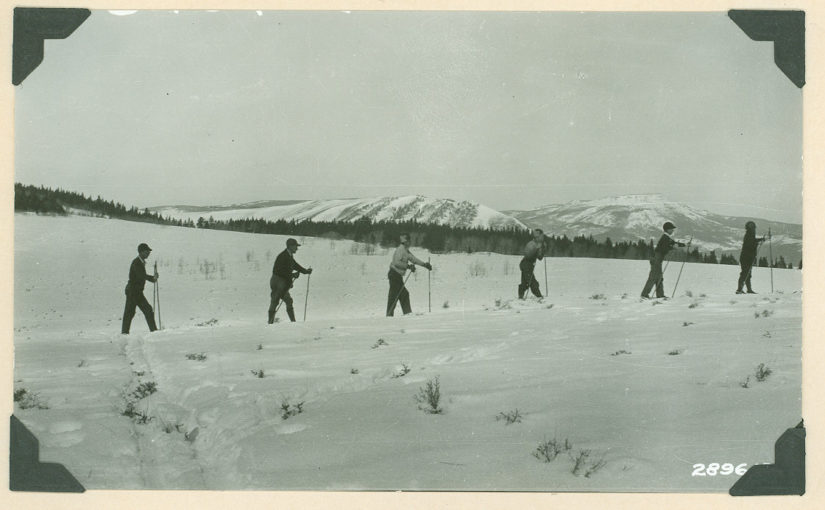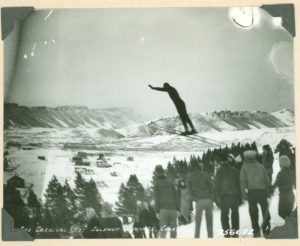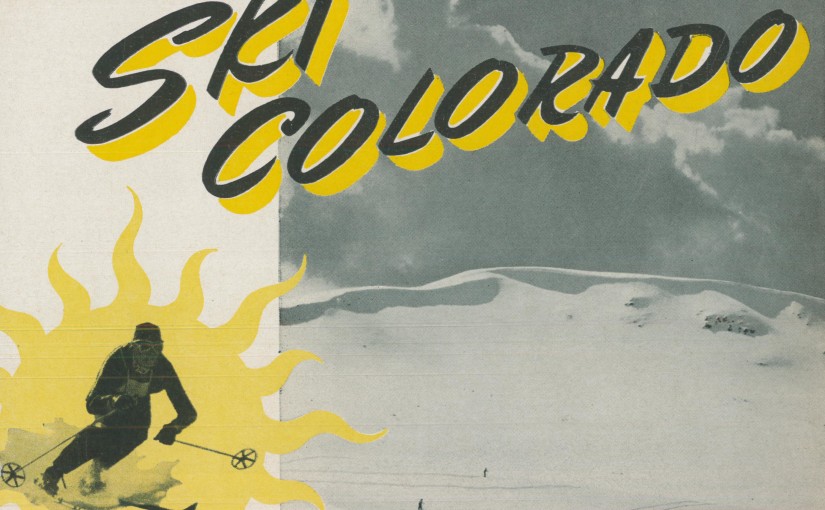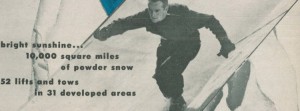A funny thing happened this past weekend. With hardly any snow on the ground and only five miles from Greeley, people were having fun, fun, fun, and skiing up a storm.—Greeley Journal, 1971
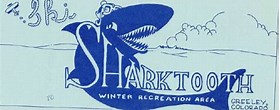
Sometimes politicians do good things for their communities. Yes, really. This was true of Mayor Dick Perchlik, who created a beginner ski hill for the kids of his town, along with his wife Sylvia and others. They made it on a sandstone bluff overlooking the Cache La Poudre River, only minutes from town.
The purpose was to allow the average boy or girl living on the plains, who couldn’t afford to go to a mountain ski area, the opportunity to ski. While constructing the hill, the Mayor and friends found sharks teeth; hence the name.
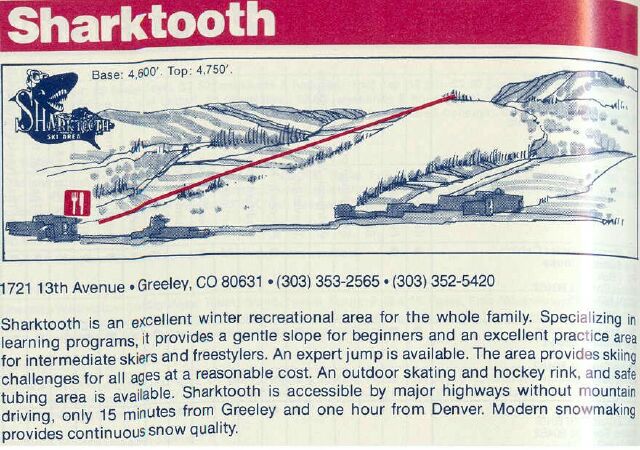
Read more about this ski hill in Lost Ski Areas of Colorado’s Front Range and Northern Mountains.
Another remarkable instance of skiing on the plains, also covered in this book, is the ski jumping exhibition that took place at Inspiration Point in Denver after the Big Snow of 1913. It started the craze of the extreme sport in Colorado, which went on for decades.
Carl Howelsen and friends set up a makeshift jump and demonstrated ski jumping for a crowd of some 20,000 people on January 19, 1914.
The images below are from Municipal Facts Monthly, January 11, 1920, when folks also came to see ski riders go off the jump at Inspiration Point.
